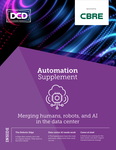As a consequence, operators are beginning to rethink their cooling practices, incorporating fresh possibilities to meet increased demand and a changing landscape.
Asserting itself as a viable alternative to air, liquid has become an increasingly sought-after method of cooling. With heat absorption rates of liquids far greater than that of air, this method can transport heat more effectively, reducing (or in some cases elminiating) the requirement for mechanical cooling plants. While there are time and resource investments required to deploy this technology, it can have a profound impact on maintaining a more sustainable and efficient facility.
However, determining which liquid cooling solution is suitable for your data center depends on a number of factors. These include rack densities, the local environmental conditions, space constraints, water usage restrictions, as well as whether the building is retrofitted or newly built. Another major decision revolves around how close you want to bring the liquid cooling to the electronics.
Some operators prefer the use of rear cabinet door heat exchangers, allowing continued use of traditional air cooled IT inside. Whilst a more progressive approach is to pump coolants directly to the chips within the IT chassis. With such a breadth of variables, many organisations need a verifiable way to test this technology before committing to it.
Often they’ll want to understand whether there is any way to compare air cooled and liquid cooled data centers? In order to answer such questions, let’s take a look at the role a digital twin can play in anticipating unforeseen challenges in liquid cooling deployment.
Understanding liquid cooling deployment with data driven digital twins
A 3D replica of a physical system or object, digital twins can be studied, altered and trialled to assess the impact of changes to its real-life counterpart. Crucially, ideas can be safely tested in the digital realm before they’re introduced into the real world. For example – thanks to their built-in Computational Fluid Dynamics (CFD) engines – digital twins can be used to accurately understand and model liquid cooling implementation to the data centre.
For many considering liquid cooling deployments, this is a step into the unknown. This is especially true when considering upgrading existing air-cooled facilities to accommodate some elements of liquid cooling. Without a digital twin in place, engineers may rely on vendor promises or consider time consuming experimental testing, resulting in project delays and increased costs.
In stark contrast, by implementing a digital twin to assess the optimum set-up of a liquid cooling system, engineers are able to understand the consequences of deployment within the framework of the legacy air cooled infrastructure. This enables businesses to make an informed decision based on the science as to whether they should go liquid or not.
A perfect partnership is formed between the ability to both project outcomes, and then effectively manage systems on an ongoing basis. By implementing a digital twin, businesses can use technologies such as liquid cooling more effectively, allowing them to capitalise on financial and environmental opportunities alike.
Unlocking the value of liquid cooling with digital twins
Changing infrastructure is an ever present challenge in the data center industry. And change has never historically been easy to handle. Fortunately, as business demands on technology accelerate, data center CFD simulation has proven itself as a sure-fire way to try out new technologies prior to any commitment. Giving greater flexibility in turbulent times, digital twins not only support the commercial strategy of the business, they also help deliver a greener and more sustainable data center strategy.
More from DCD
-

Sponsored Digitally transforming the data center
While it is easy to state the importance of starting a digital transformation journey, actually doing it is much harder
-

The Automation Supplement
As perceptions change and technologies evolve, what is coming next in data center automation?
-

Sustainability: Attitudes and Technology Trends Report
Download this free report today for exclusive insights into what our global community view as sustainability challenges and priorities, brought to you in partnership with Honeywell


